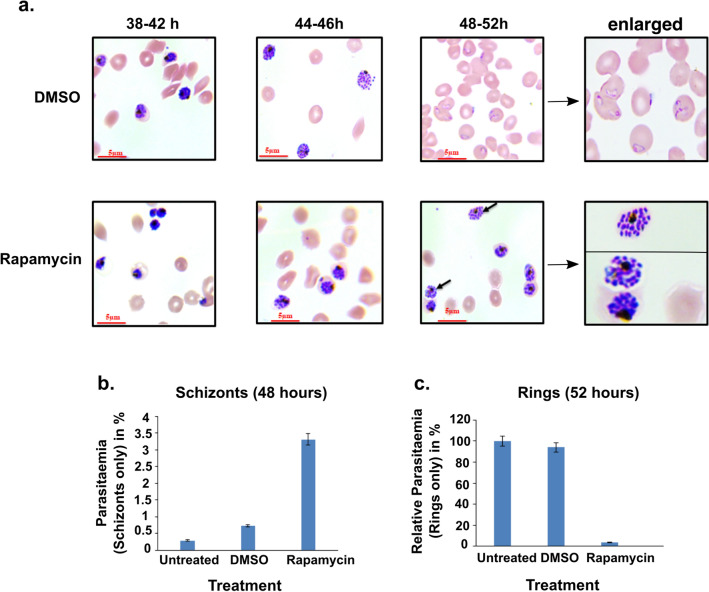Figure 6.
Induced deletion of pfmsa180 results in the arrest of parasite egress at the end of schizogony. (a) Images of Giemsa-stained thin blood smears 38–52 h after rapamycin or DMSO treatment. The mock-treated (DMSO) parasites egress and invade new RBCs to form ring stages, while the rapamycin-treated parasites remain as late stage schizonts, often without a visible PVM and the merozoites filling the whole erythrocyte (arrows). The last panel displays a zoom-in image for rings and schizonts. Scale bar = 5 µm. (b) Number of schizonts observed in untreated, mock-treated or rapamycin-treated i∆msa180 parasites 48 h after setup (~ 3% parasitemia). The percentage schizonts observed in each treatment was calculated from three independent experiments. Error bars depict standard error of mean. (c) The relative percentage of rings observed in untreated, mock-treated or rapamycin-treated iΔmsa180 parasites 52 h after setup. The percentage of rings in each treatment was calculated from three independent experiments with respect to untreated parasites, for which the parasitemia was set to 100%. Error bars depict standard error of the mean of two independent experiments.

